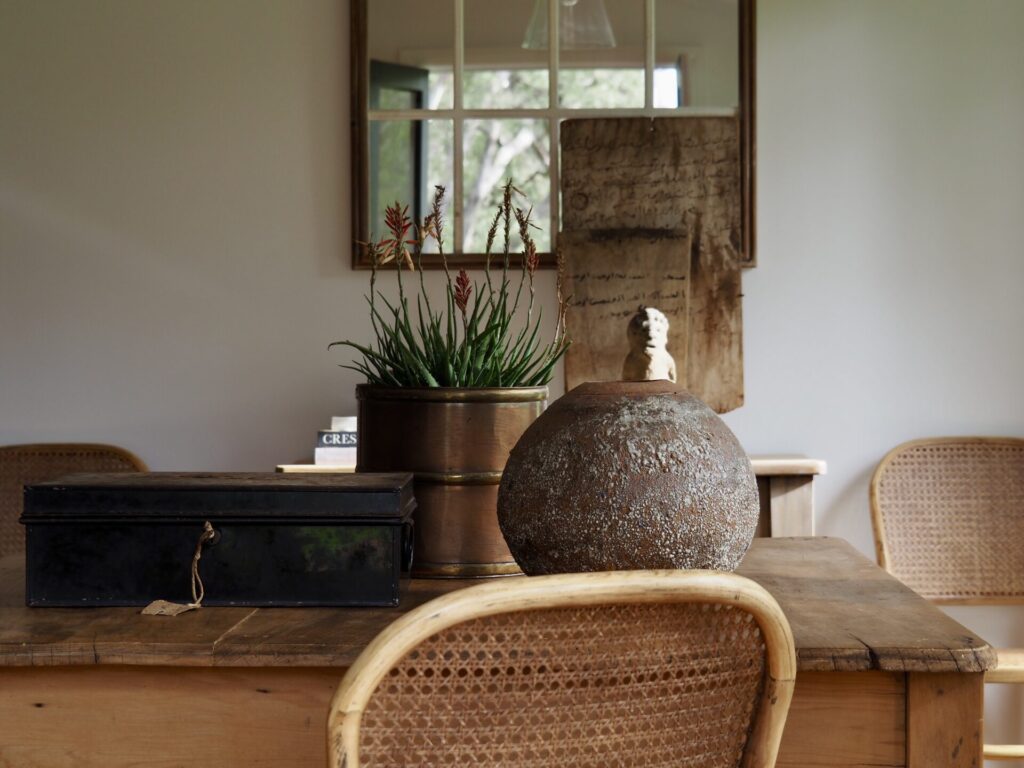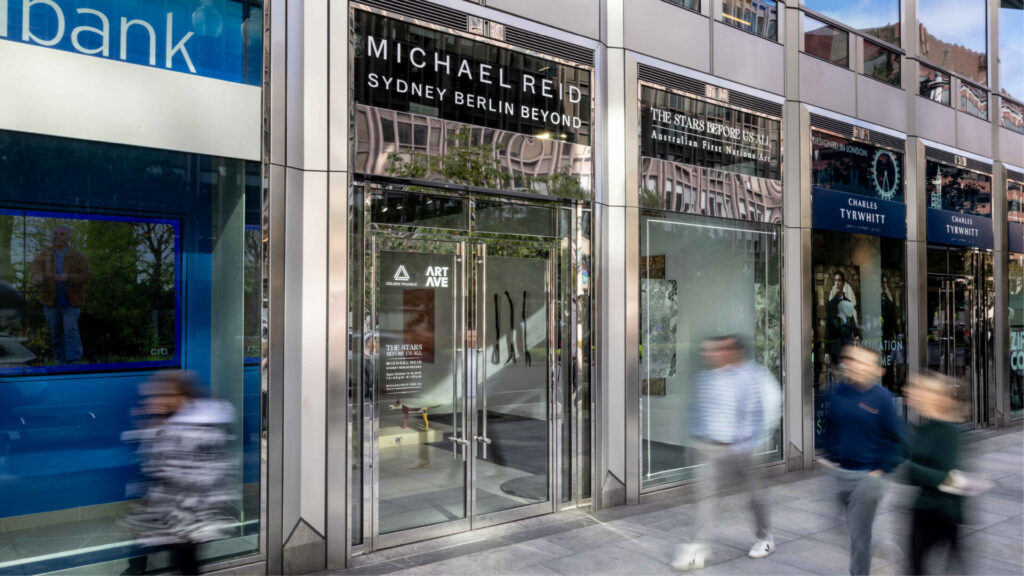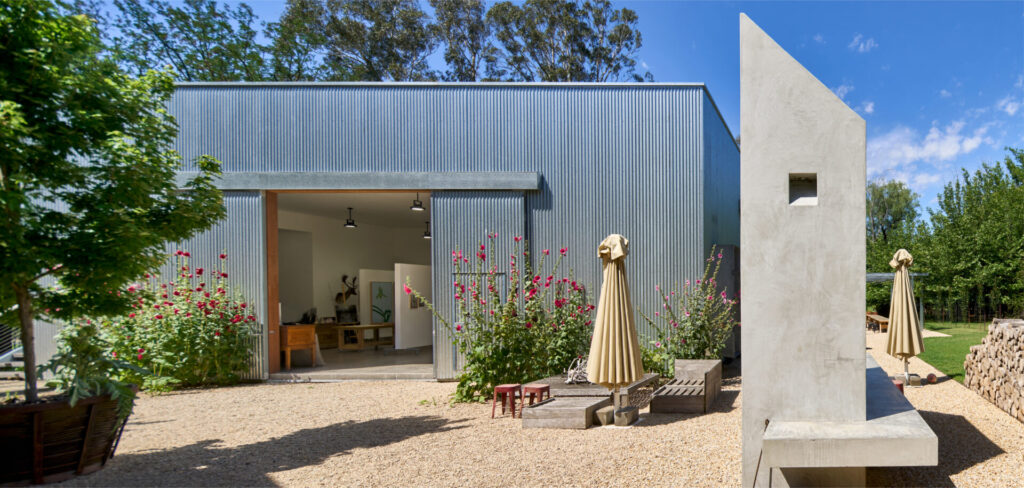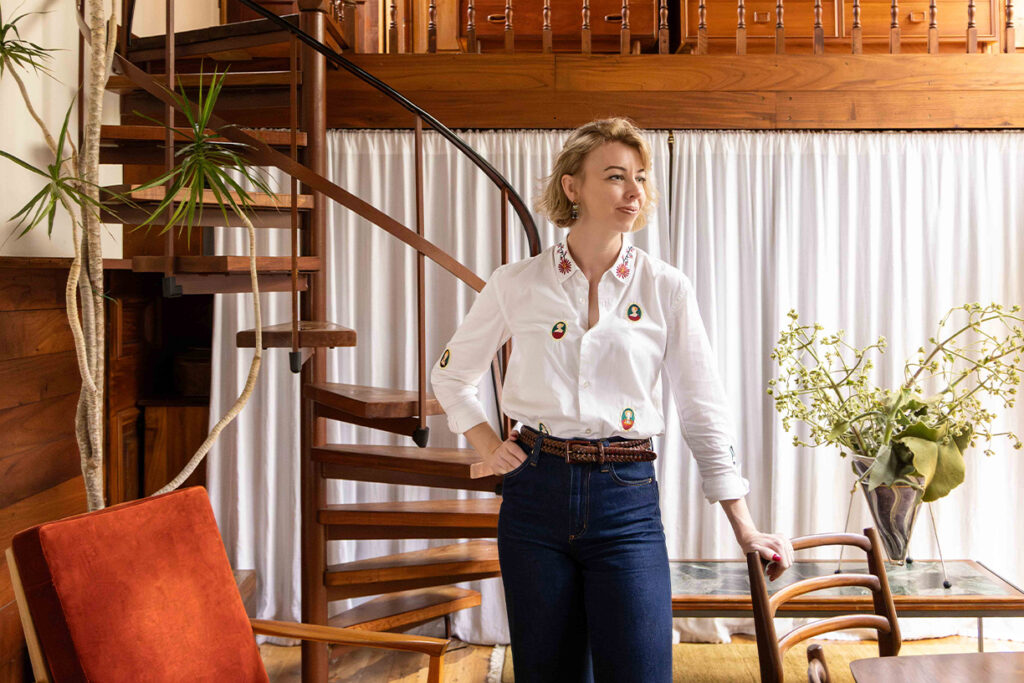Denise Faulkner: Art of the Garden
A move from the city to a remote bush block prompted artist Denise Faulkner to pick up her brush again.
She rises languorously from a chair, stretches her long, elegant legs before jumping up onto a desk. Once safely landed, the chocolate Burmese treads carefully around a box of Winsor & Newton paints before deciding that the perfect place for her next nap is on the sheet of watercolour paper lying on the wooden tabletop.


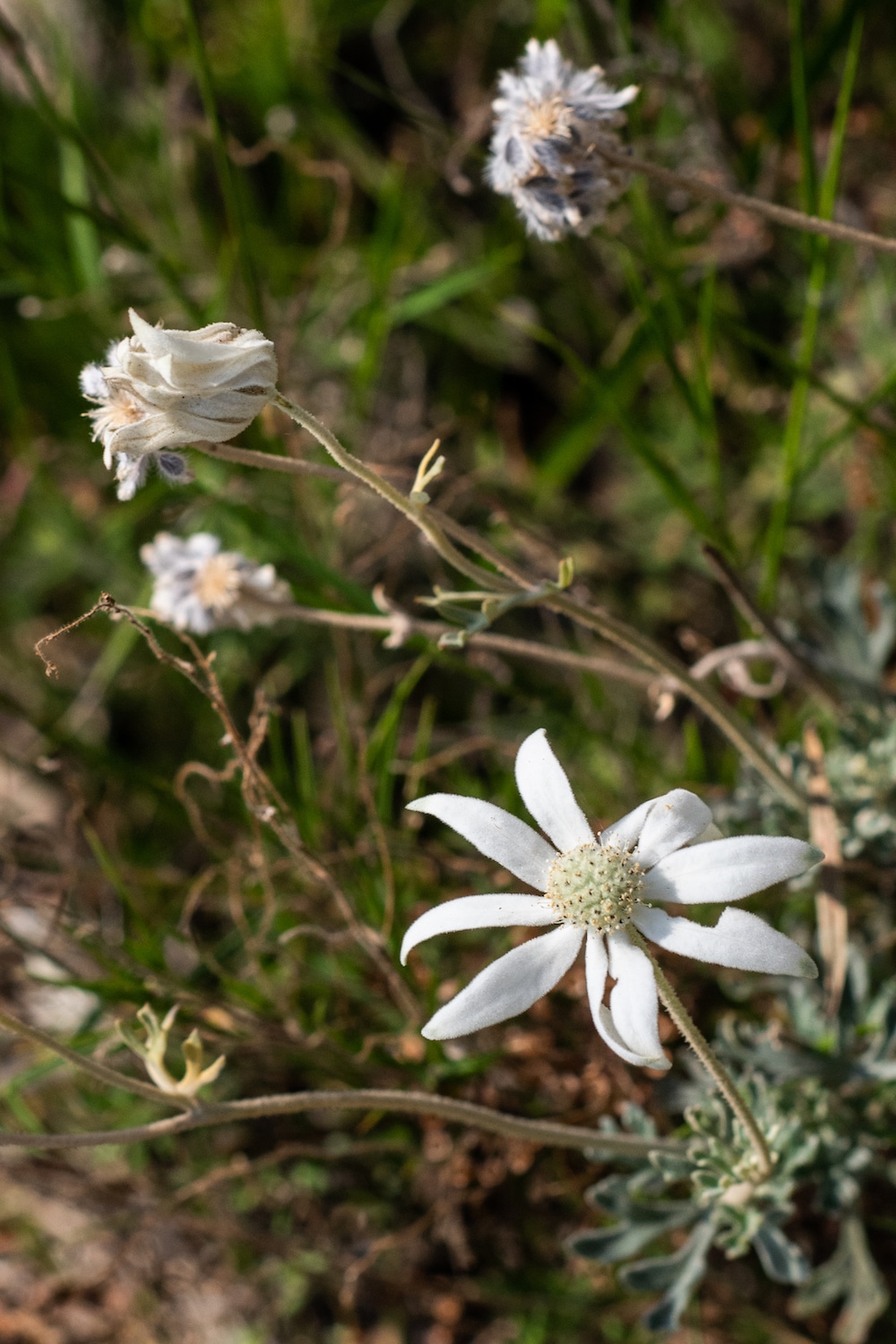
Slinky has seized on a narrow window of opportunity when artist Denise Faulkner has put down her brushes to make a cup of tea.
But the 49-year-old’s favourite Booths Real Old Willow teacup, often featured in her paintings, rarely gets an outing these days due to the relentless pace of keeping up with commissions and exhibition deadlines. “A pretty teacup just isn’t a big enough cup of tea for me anymore when I am painting,” she says wryly but clearly pleased at the increasing demand for these whimsical watercolours.
Under a window looking out onto the bush, is a bench spread with the tools of her trade. The names of the blues in the Winsor & Newton palette read like a magical mantra with a hint of geography: Prussian, indigo and French ultramarine mixed with cobalt, Antwerp and cerulean, the colour of the clear blue sky soaring above the roof of this 70s weatherboard cottage 35 minutes out of Mudgee in the NSW Central West.
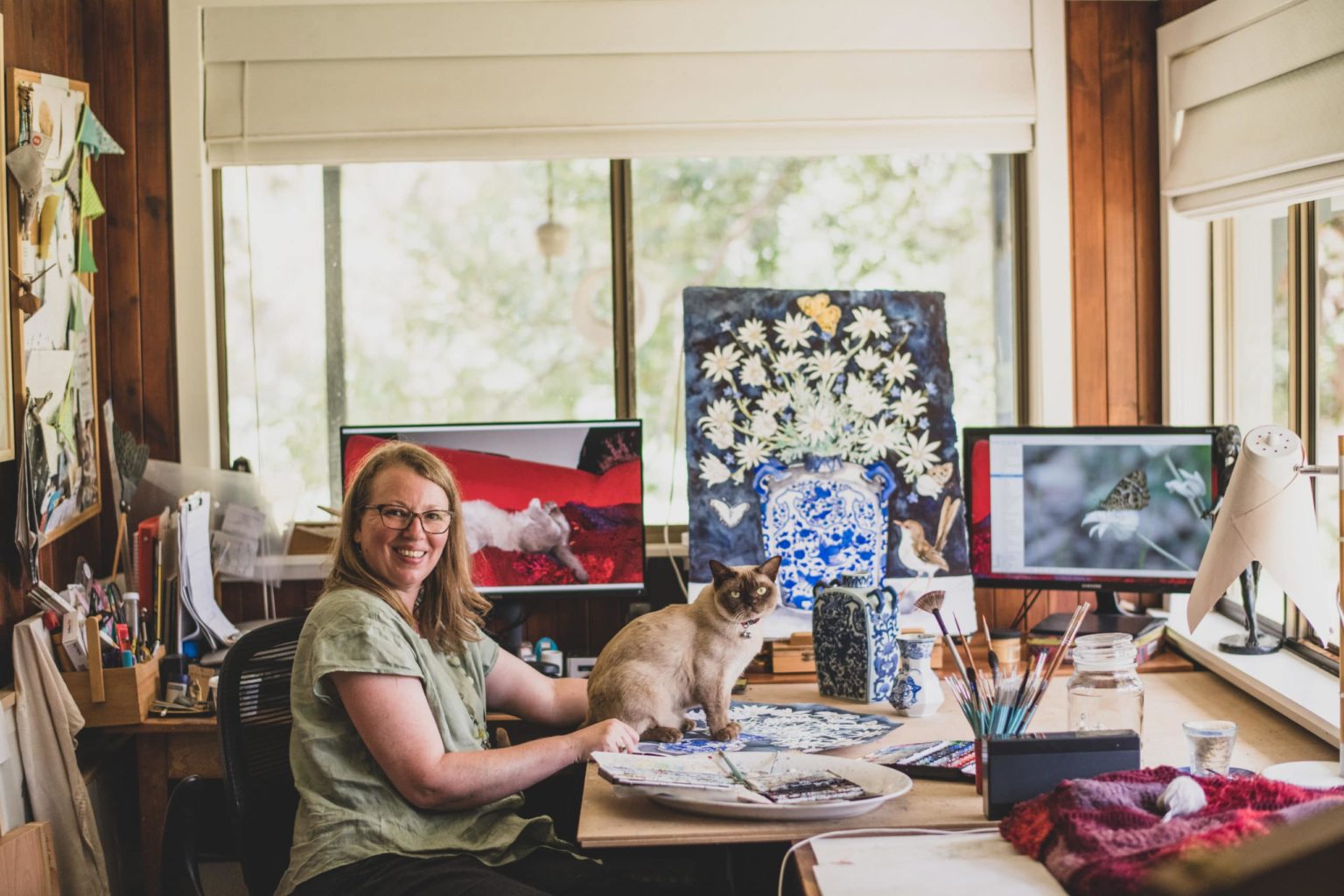



She takes a sip of freshly made English Breakfast (it’s strong with just a dash of milk) in a large mug emblazoned with Sir Frederic Leighton’s Flaming June from the Art Gallery of NSW. It’s a reminder of the 14 years this graduate of the National Art School spent working there as a book buyer. “It was a wonderful place to work,” she recalls as we talk about her favourites in the AGNSW’s permanent collection.
Willow ware with its intricate chinoiserie is a regular subject in Denise’s watercolours. (The old wares shops in nearby Gulgong are a valuable hunting ground for this vintage china.) At first glance, the paintings appear to be following the traditional pattern telling the story of ill-fated lovers with willow trees, pagodas and doves but under closer scrutiny you can spot Snoopy the beagle from the cartoon strip lying on a pagoda roof and Eastern grey kangaroos grazing.
Even the cottage features in one work. The Chinese elm tree grows to one side, the cat sits at the front door, the wombat is in his burrow at the base of the towering pink granite ridge at the back while the three Isa Brown chickens we have just visited in their chook pen roam the front yard.




Denise, who grew up in Sydney’s Drummoyne, is the youngest of four but essentially, she was an only child. Books played a big part in this little girl’s life. Alice in Wonderland was read again and again — “it was the pinnacle for me” — and the Lord of the Rings, The Hobbit and Wuthering Heights quickly followed.
“When I was a child, it was just me and mum. I would spend a lot of time amusing myself — painting, drawing and reading. They were my favourite things to do in the world and that’s how I spent my days,” she says.
In many ways, today she is painting the fairy tales born of this period. After many layers of careful brushwork — “I’m hard on my brushes, I don’t buy expensive ones as I wear them out” — kookaburras with mischievous glints in their eyes emerge on the paper to swoop down to steal from side plates piled high with lamingtons, galahs dance around the palest pink Iced Volvos while a barn owl and a mouse have a standoff across a slice of passionfruit cheesecake. All are clearly a figment of Denise’s imagination but the work which led to them was very firmly rooted in reality a few years ago: a brazen magpie swooping down to steal the cat biscuits in a Japanese porcelain bowl put out for a stray tabby cat who had emerged out of the bush one day.
But it took two decades and a move to this remote 18-hectare bush block between Mudgee and Gulgong for Denise to return to art.
After graduating from art school, where artist Lucy Culliton was one of her contemporaries, Denise had felt daunted by the idea of making a living as an artist.
“I might have gone to the odd life drawing class, but I was working full time and it was hard to find the energy while I was on that treadmill,” she says.
Looking for a break from city life, Denise and her partner Fraser, an IT specialist who was already working remotely, had bought a weekender in 2009. The pair found they were increasingly reluctant to return to Sydney after each visit and made the decision to move there permanently in 2013. “I thought, if we are going to move out of the city, there is no point just moving into another town, even if it was in the country,” says.
Even though it is only a short drive, just 15 kilometres, from the historic town of Gulgong, there was a hurdle Denise had to overcome — she didn’t have her driver’s licence so couldn’t apply for any local jobs. The solution? A return to painting. The surrounding bush and wildlife quickly inspired her, and she now spends her days happily painting.

Her most recent work is part of the annual Michael Reid Murrurundi collaborative exhibition with Country Style magazine: Art of the Garden.
“During the drought a lot of our trees in the bush died, so without the canopy more native shrubs and flowers sprung up changing the whole dynamic of the landscape. This year was our most spectacular year for the flannel flowers. Without the tree canopy, we were able to see them waving in the breeze up high on the ridge in the most hostile and sunbaked conditions,” she says.
“Up close they were a forest of soft fuzzy flowers loved by all the insects, so I decided to include just some of the visitors to my not so still lifes. Flannel flowers have been adopted as the symbol of mental health awareness, something I think we all need to consider in these trying times, but given where I know they grow, I also see them as the symbol of resilience and strength.”
With an exciting project on the horizon, it seems this very modest artist has returned to “the tribe I found at art school” with her new life in the bush, painting whimsical pieces edged with her quiet humour.
“It is often hard to say goodbye to my paintings. They are a part of me, but it also makes me happy to know that someone else likes them enough to take them home and share their walls with them.”





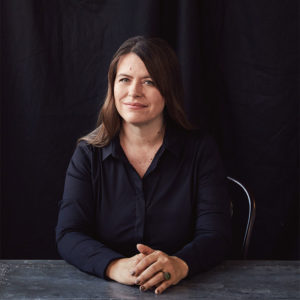
Victoria Carey
Our editorial director is very familiar with Denise’s work. “I remember speaking to her a few years ago during the drought so it was great to revisit this story,” she says.
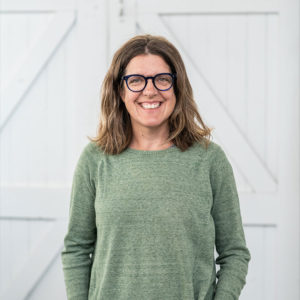
Pip Farquharson
This photographer, who grew up on a farm in Blayney in the Central West, spent an afternoon with Denise bushwalking. “We went up to find the flannel flowers growing out of the cracks up on the ridge she had painted. I loved seeing where she gets her inspiration from,” she says.
- XXXVIII LA Story by Michael Reid OAM April 2024
- XLIX Paddy’s Cottage November 2025
- XLVIII Washington DC by Michael Reid OAM November 2025
- XLVII The Outdoor Fireplace at Murrurundi by Michael Reid OAM October 2025
- XLVI Amelia Zander of Zander & Co. July 2025
- XLV Marlie Draught Horse Stud by Michael Sharp June 2025
- XLIV Trump Engulfed the Fires by Michael Reid OAM February 2025
- XLIII Newcastle by Jason Mowen October 2024
- XLII The Business of Gardening by Michael Reid OAM September 2024
- XLI Carly Le Cerf by Sarah Hetherington August 2024
- XL Pecora Dairy by Michael Sharp July 2024
- XXXIX Joseph McGlennon by Michael Reid OAM May 2024
- XXXVII Julz Beresford by Michael Sharp March 2024
- XXXVI Sydney Contemporary by Jason Mowen February 2024
- XXXV The US of A by Michael Reid OAM December 2023
- XXXIV Scone Grammar School’s principal Paul Smart by Victoria Carey November 2023
- XXXIII AgQuip by Jason Mowen October 2023
- XXXII Tinagroo Stock Horse’s Jill Macintyre by Victoria Carey September 2023
- XXXI The Old Gundy School House by Victoria Carey August 2023
- XXX Annette English by Victoria Carey July 2023
- XXIX The Ghan by Jason Mowen June 2023
- XXVIII All in the family: The Arnotts May 2023
- XXVII A Capital Plan by Jason Mowen March 2023
- XXVI Mandy Archibald March 2023
- XXV Paul West February 2023
- XXIV The Other Newcastle by Jason Mowen January 2023
- XXIII Mount Woolooma Glasshouse at Belltrees December 2022
- XXII Murrurundi to Matino: with Jason Mowen November 2022
- XXI James Stokes October 2022
- XX Adelaide Bragg September 2022
- XIX Tamara Dean August 2022
- XVIII Going home: Angus Street July 2022
- XVII Belltrees Public School June 2022
- XVI A Road Trip on the New England Highway May 2022
- XV David and Jennifer Bettington: from horses to houses April 2022
- XIV Denise Faulkner: Art of the Garden March 2022
- XIII Childhood memories: Willa Arantz February 2022
- XII Riding ahead: Giddiup January 2022
- XI Ingrid Weir’s rural life December 2021
- X Life by design: William Zuccon November 2021
- IX Life on the land: The Whites October 2021
- VIII Goonoo Goonoo Station September 2021
- VII Murrurundi: a garden playground August 2021
- VI Pat’s Kitchen July 2021
- V A creative life: Charlotte Drake-Brockman June 2021
- IV Magpie Gin May 2021
- III The Cottage, Scone April 2021
- II At home with Jason Mowen March 2021
- I A town that performs February 2021















